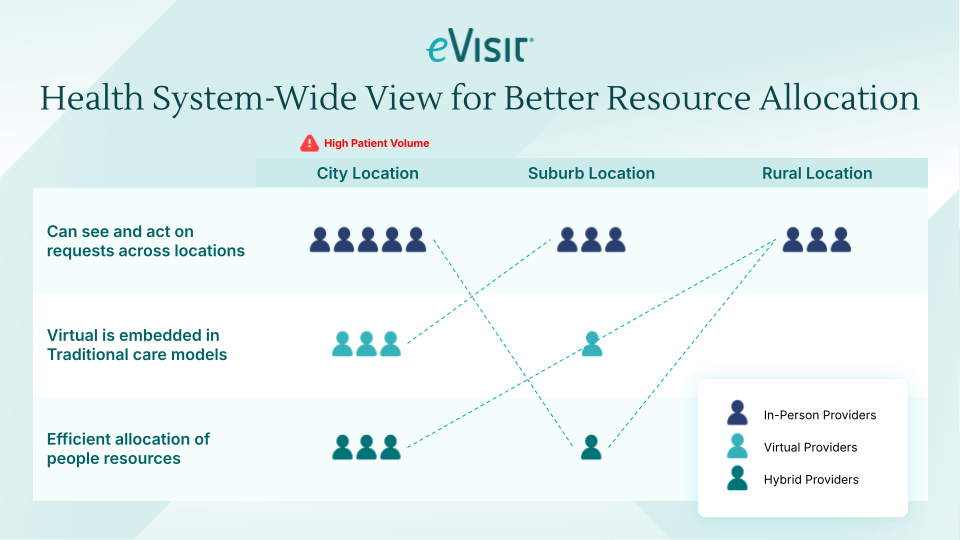BEHAVIORAL HEALTH
We Increase Access, Drive Engagement, and Scale Healthcare Models
With eVisit, care delivery systems expand access to behavioral health services to treat more patients with greater recurring engagement — without adding physical space. Our digital health platform scales so you can add new service lines and attain revenue growth.



HOW WE HELP
Connecting Providers with More Patients
eVisit’s platform redefines how virtual mental health care is initiated, organized, and delivered by giving providers access to all relevant patient data before, during, and after every encounter.

How We Make Digital Behavioral Health Convenient, Comfortable and Effective
With eVisit’s Digital Front Door, patients can initiate appointments via a QR code, your website, or your existing portal, resulting in reduced no-show rates. Our Digital Command Center, which can be integrated and embedded into an EHR, leveraging integration best practices such as SMART on FHIR calls, which unlocks context aware linking and encounter-level patient data displays directly in the EHR. Providers can also add family members or clinicians to the visit, share attachments or other relevant information, and all parties can leave feedback after the visit.
Making digital behavioral health comfortable and convenient empowers care delivery systems to reach more patients, conduct engaging and effective visits anywhere that patients want to be, and increase associated revenue.





